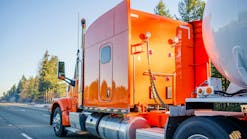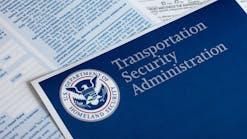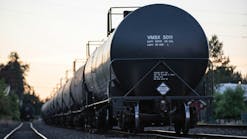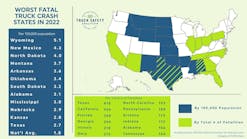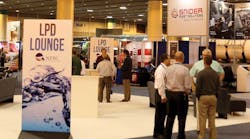THERE is no bigger issue on the radar of the Truck Trailer Manufacturers Association (TTMA) than the much-discussed Greenhouse Gas (GHG) Phase 2 rulemaking, which was finalized on August 16, 2016, published in the Federal Register on October 25, 2016, and took effect on December 27, 2016.
John Freiler, TTMA’s engineering manager, doesn’t seem to be super-sold on it. He raised some concerns during a presentation at National Tank Truck Carriers’ 2016 Tank Truck Week in New Orleans, Louisiana. [It should be noted that Freiler spoke in October 2016 before President Donald Trump was elected, and well before taking office. Changes could be in store for GHG 2.]
“The EPA (Environmental Protection Agency) insists this is all great stuff: It’s going to save tons of money and it’s going to save fuel and CO2 on heavy trucks through to heavy pickup trucks,” he said. “It’s a big rule—1,700 pages just for the rule, and when you combine the response to the documents and other things, it’s thousands of pages. And who doesn’t want to save money?”
The good news for tank truck fleets is that the most heavily regulated trailers will be box vans, with those trailers requiring an increasing stringency of aerodynamic devices, low rolling resistance (LRR) tires, tire pressure systems, and light-weighting. These regulations begin with 2018 model year trailers and reach full effect by 2027.
For tank trailers (also container chassis and flatbeds), buyers will be required to purchase new equipment with low rolling resistance tires and a tire pressure system—either a tire pressure monitoring or automatic tire inflation system on all tires on that trailer. This will start in 2018, or 2019 if you’re buying from a small business, which is defined as a company with 1,000 or fewer employees. That may cover most of the tank manufacturers, according to Freiler.
But there are a few flies in the ointment. The problems for cargo tank users, according to Freiler:
• Tires and tire pressure management/monitoring systems are now considered “emissions control devices” with all the associated EPA rules and regulations in effect. Users may not “remove or render inoperative” such devices under a civil penalty of $4,454 “for each engine or piece of equipment in violation,” according to 40 CFR1068(b)(1). Changing out eight tires with unqualified retreads with no TPMS monitors in place could potentially be 16 violations and result in a $71,264 fine. “Realistically, the EPA probably is not going to hit everybody with that right away,” he said. “Instead, they’re going to just count on the fact that fear of a huge penalty will get most people to keep things in place.”
• Expect tire selection to go down and costs to go up.
• If you’re already using LRR tires and are good about monitoring your tire pressures, you’ll see no gains.
The rule defines box vans as “trailers with enclosed cargo space that is permanently attached to the chassis, with fixed sides, nose, and roof. Tank trailers are not box vans.” Tank trailers are defined as “a trailer designed to transport liquids or gases.”
But wait a second, Freiler said. What about a dry bulk trailer?
“That type trailer is not hauling liquids or gases, so it is not a tank trailer,” he said. “So does it have enclosed cargo space? Sure looks like it does. Permanently attached to the chassis? Yeah. Fixed sides, nose, and roof? Yeah, looks like it. So you could see an EPA person saying, ‘That is a box van. It needs the most stringest level of aerodynamic treatment.’
“That was not their intent. I’ve worked with the folks in Ann Arbor Michigan). It wasn’t their intent to do that, but we all know the intent of the people who write the code and what ends up in the rule doesn’t always translate. So how will we know?
“EPA plans to develop a guidance document and provide a compliance officer for manufacturers to work with. They’re going to collect a series of decisions. If they make a judgment call, ‘Yes, dry bulks vans are not covered by the rule,’ manufacturers “are encouraged to ask the agencies to make a determination before production begins.” So you can go up to a manufacturer and say, ‘I want a trailer, but I want these changes.’ They’re going to say, ‘OK, I have to shoot this past the EPA first,’ unless they’re very confident that the changes don’t make any difference. That will increase delays and increase the cost, and decrease flexibility.”
Authority issue
He said authority is “potentially the biggest issue overshadowing the entire discussion.”
“We spent a lot of time on it in comments,” he said. “This is GHG 2. If we accept that the EPA has authority here, then we accept that a GHG 3, 4, or 5 can come along, and those will be stricter and stricter still. They’ve made no bones about that. Their intention is to force technology. They believe the industry needs to be pushed. For you actually driving out there, how many of you are satisfied with how GHG 1 has worked with your tractors? I heard lots and lots of complaints that new tractors were causing all kinds of problems because the technology was not fully formed.
“EPA’s authority comes from the Clean Air Act’s mandate to regulate new motor vehicles. Trailers don’t have motors. So we’re like, ‘What is this all about? Do you really have authority to do what you’re doing?’ We’re not opposed to all regulation. We work closely on all safety issues. We’re not opposed to environmental regulation. We have lots of people who care deeply about that. But we want to make sure it’s done lawfully and safely.”
And he sees other issues.
“Apart from authority issues, we’re concerned that the rule is structured to force changes onto trailers that gain the least benefit,” he said. “It’s going to force changes on people who get the least out of it. The people who could get savings are already working on it. The voluntary SmartWay program is a good example. The SmartWay program works well, allowing owners to select strategies that work for them, so those who can gain benefit are already doing so.
“It accurately allows people to judge what fuel-saving systems out there do. So those people who can gain savings are already doing it. So people who gain the least are the ones affected. So that bold claim of 80 billion gallons of fuel saved and $230 billion in net benefits to society … we think that a lot if not all of that is paper gains. A lot of people are going to be forced to buy equipment that isn’t going to do them any good.”
Bench testing
Glen Harm, engineering manager at Girard Equipment, talked about changes in regulations that became effective in July for 180.407j, “inspection and testing of pressure-relief devices (PRDs),” which replaces bench-testing requirements, 180.407.
In (g)(1) (ii), it reads, “All self-closing pressure relief valves, including emergency relief vents and normal vents, must be removed from the cargo tank for inspection and testing according to the requirements in paragraph (j) of this section.”
Harm said the PRD should be removed and visually inspected for corrosion. Then verify that the PRD’s venting capacity in square feet is equal to or greater than the cargo tank data plate, and the pressure relief device MAWP (maximum allowable working pressure) matches the cargo tank MAWP data plate.
According to 49 CFR 180.407(j)(1)(ii):
• For MC307 reclosing pressure relief valves, it must open at not less than the cargo tank MAWP and not more than 110% of the cargo tank MAWP and must reseat to a leak tight-condition at no less than 90% of the cargo tank MAWP.
• With reclosing pressure relief valves modified as provided in 180.405(c) to conform with DOT407 specifications, according to the pressure set forth for a DOT407 cargo tank in 178.347-4 of this subchapter.
According to 49 CFR 180.407(j)(1)(v)(vi):
• For DOT400-series cargo tanks, according to the pressures set forth for the applicable cargo tank specification in 178.346-3, 178.347-4 and 178.348-4, respectively, of this subchapter.
• For cargo tanks not specified in this paragraph, it must open at not less than the required set pressure and not more than 110% of the required set pressure and must reseat to a leak-tight condition at no less than 90% of the required set pressure.



